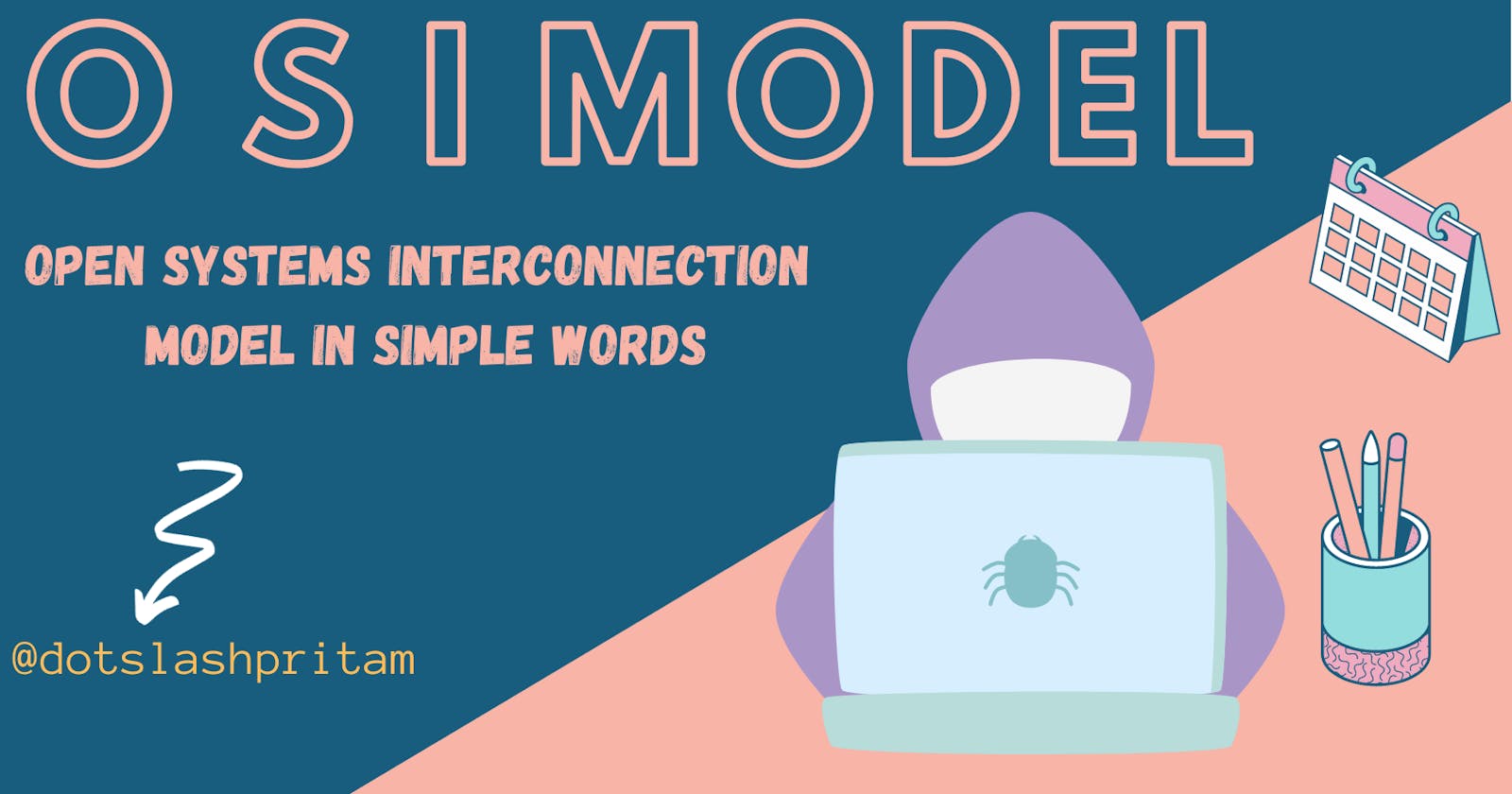What is OSI Model
OSI stands for Open Systems Interconnection. It is a conceptual model of how the computer network works under the hood. If you send a WhatsApp message to a friend or fire up your browser & open up any website how things working internally on the internet, OSI model helps in understanding them. Let's deep dive into it.
Layers of OSI model
There are seven layers in the OSI model they are 👇
Application → Presentation → Session → Transport → Network → DataLink → Physical
All of them are works together and use different protocols in the complex network.
Layer in Details
7️⃣ Application Layer :
As the name suggests this layer deals with applications in your device. This layer is the interface for the applications in the computers which need a network to work, like a web browser or any other app. The user interacts with this layer, it is a sort of a gateway for the next layers.
👉If you open up your browser and open google.com or any other website here your browser is part of the application layer. It creates an HTTP request to google's server via its next layers
6️⃣ Presentation Layer:
Data from the application layer comes in the Presentation layer. The presentation layer mainly converts/translates the data(coming from the application layer) in a standardized format that the machine can understand. There are main three functions of the presentation layer
- Data format 2. Encryption 3.Compression
Data Format: Converts the data in a standardized format
Encryption: Encrypts the data
Compression: If the data is too large it compressed in a small format
👉The request data coming from the application layer now converts and encrypted in this layer and sends to the next layer
5️⃣ Session Layer:
Correctly formatted and encrypted data comes here in the session layer. Now session layer opens up communication in the other computer in the network in order to send/receive the data. It creates and synchronizes the communication between the sender and receiver. It plays an important role in managing different endpoints of different data coming from different applications without all data getting mixed up. When the session layer successfully creates a connection between the sender & receiver then the data is passed through the next layer
👉If you opened 3 tabs in your browser and run three different sites simultaneously then the session keeps things smooth.
4️⃣ Transport Layer:
This is one of the main layers of the OSI model that serves multiple functions. Correctly formatted data comes in the transport layer and the session is also opened now transport layer choose one of the two main protocol by which data will be transmitted
i. TCP ii. UDP
i. TCP(Transmission Control Protocol):
This is a connection-based reliable protocol & makes sure all data is transferred to the receiver, If any data is lost it resends the data that's why TCP is relatively slower. e.g chat/ text message sending
ii.UDP(User Datagram Protocol):
This is the opposite of TCP it throws the data packets to the receiving computer, and if any packets lest it doesn't resend that's why it is fast. e.g Video streaming
when the protocol is selected the data is divided into bite-sized pieces cal segments(TCP)/datagrams(UDP) and transferred to the next layer.
3️⃣ Network Layer:
This layer deals with the logical addressing of the data(packets). It takes the data from the transport layer and looks up the source and destination IP address of the packet and finds the best route to take.
👉 if you are requesting a webpage this layer takes the IP address and finds the best route to make the request and send the data from the server
2️⃣ DataLink Layer:
This layer takes the packet from the network layer and adds a physical (MAC) address endpoint so the packet reaches the particular device from it requested. every network-enabled device has a unique MAC address given by the manufacturer by which it identified data link layer adds those in the packet header
👉In your home many devices are connected in the same network so how can the network know from which device the page is requested datalink layer plays an important role here.
1️⃣ Physical Layer:
The physical layer is right down to the hardware of the computer. This is where the electrical pulses that makeup data transfer over a network are sent and received.
